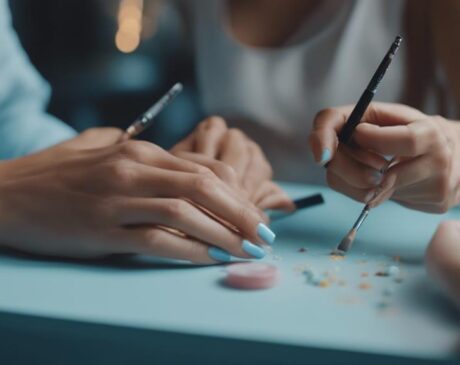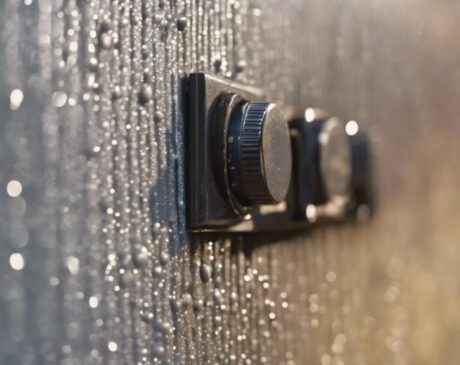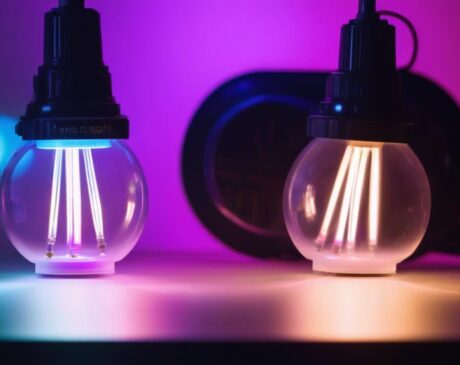What Happens if You Wear Nail Polish All the Time?
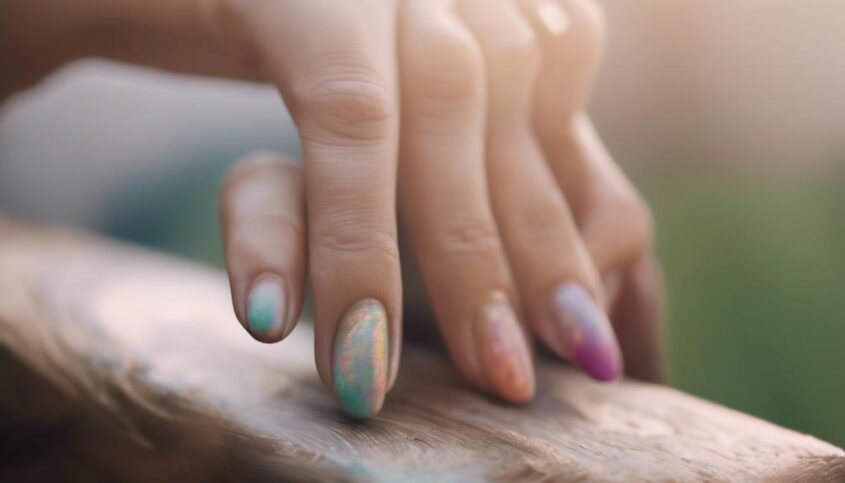
Prolonged and repetitive nail polish wear can cause nail discoloration from pigments and harmful chemicals. Weakness and brittleness may develop due to chemicals stripping natural oils. Increased risk of infections arises from trapped moisture and weakened nail beds. Exposure to formaldehyde, toluene, and dibutyl phthalate can pose health risks. Nail bed health may deteriorate, leading to dryness, discoloration, and fragility. Discover more about the potential effects of long-term nail polish use.
Key Takeaways
- Nail discoloration, weakening, and brittleness can result from prolonged nail polish wear.
- Risk of nail infections increases due to trapped moisture and weakened nail bed.
- Chemical exposure from traditional polishes can lead to health concerns like allergies and hormonal disruptions.
- Nail bed health may deteriorate, causing dryness, discoloration, and increased susceptibility to infections.
- Opt for safer nail polish formulas free from harmful chemicals to maintain nail health.
Nail Discoloration and Staining
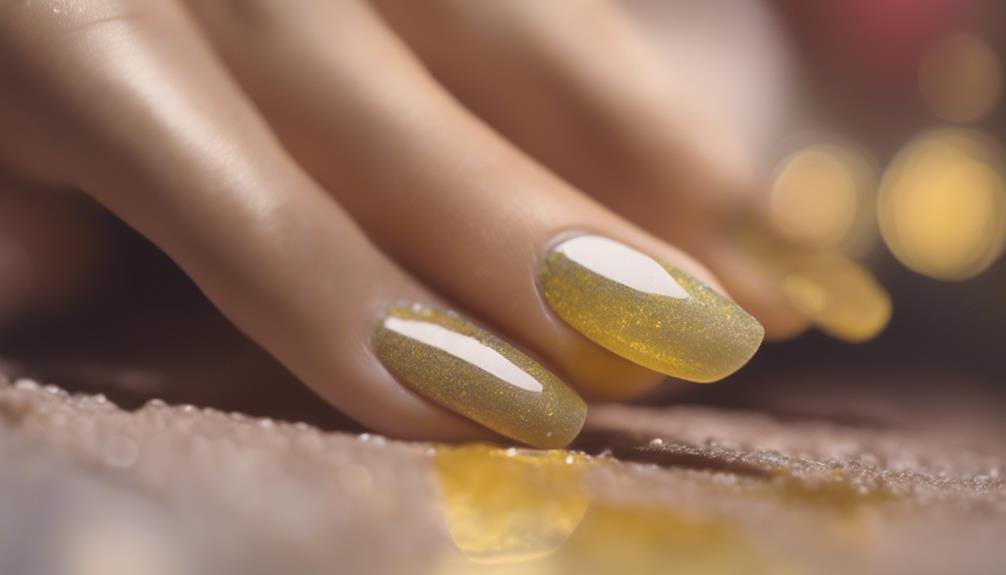
Prolonged and frequent use of nail polish can lead to nail discoloration and staining over time. Pigments in the nail polish, particularly darker shades, can penetrate the nail plate, causing it to become yellow or stained. Traditional nail polish formulas contain chemicals like formaldehyde and toluene, which can also contribute to discoloration. To combat this issue, innovative nail polish brands have been developing formulas that are free from harmful chemicals and are breathable, allowing oxygen and moisture to reach the nails. These newer formulations help reduce the risk of discoloration and staining, promoting healthier nails even with regular polish wear.
Furthermore, the application of a base coat before applying nail polish can act as a barrier, preventing direct contact between the pigments and the nail surface, thus reducing the chances of discoloration. Proper nail care practices, such as giving the nails a break from polish periodically and using nourishing treatments, can also help maintain the natural color and health of the nails.
Weak and Brittle Nails
Nail polish wearers may notice a common issue of weak and brittle nails that can arise from prolonged exposure to certain nail polish formulas and lack of proper nail care practices. The chemicals present in some nail polishes, such as formaldehyde, toluene, and dibutyl phthalate, can strip the nails of natural oils, leading to dryness and fragility. Additionally, constantly painting over nails without giving them time to breathe and renew themselves can weaken the nail structure over time.
To combat weak and brittle nails, individuals should prioritize nail health by opting for nail polishes that are free from harmful chemicals and enriched with vitamins and minerals to promote nail strength. It is also essential to use a nourishing base coat before applying nail polish and to regularly moisturize the nails and cuticles. Furthermore, giving the nails occasional breaks from nail polish and using strengthening treatments can help restore their health and resilience. By incorporating these practices into their nail care routine, individuals can maintain strong and beautiful nails despite frequent nail polish use.
Risk of Infections

Exposure to nail polish for extended periods can increase the risk of developing nail infections. When nail polish is applied continuously without giving the nails a break, it can create a favorable environment for bacteria and fungi to thrive. The chemicals present in nail polish, along with the sealing nature of the polish, can trap moisture and potentially lead to nail infections such as fungal growth or even bacterial infections.
Moreover, prolonged use of nail polish can weaken the nail bed and surrounding skin, making it more susceptible to infections. The repetitive application and removal process can cause the nails to become brittle and prone to cracking, creating entry points for pathogens to invade.
To mitigate the risk of infections associated with wearing nail polish, it is recommended to allow the nails to breathe periodically by giving them polish-free intervals. Additionally, practicing good nail hygiene, using quality nail products, and ensuring proper nail care can help reduce the likelihood of developing nail infections due to frequent nail polish use.
Chemical Exposure Concerns
Continuous use of nail polish raises concerns regarding the potential health risks associated with prolonged exposure to various chemicals found in these products. Nail polishes often contain substances such as formaldehyde, toluene, and dibutyl phthalate, which have been linked to adverse health effects. Formaldehyde, a known carcinogen, can cause skin irritation and allergic reactions. Toluene, a solvent used to keep polish smooth, has been associated with dizziness, headaches, and eye irritation. Dibutyl phthalate, used to increase flexibility, has been linked to hormonal disruptions. Additionally, certain nail polish removers contain acetone, which can lead to dry and brittle nails with prolonged use. The continuous inhalation or absorption of these chemicals through the nail bed can potentially have long-term health implications. To address these concerns, some companies are now producing nail polishes labeled as ‘5-free' or ‘7-free,' indicating that they are free from some of the most harmful chemicals. Innovation in the beauty industry is driving the development of safer nail products to minimize chemical exposure risks.
Impact on Nail Bed Health
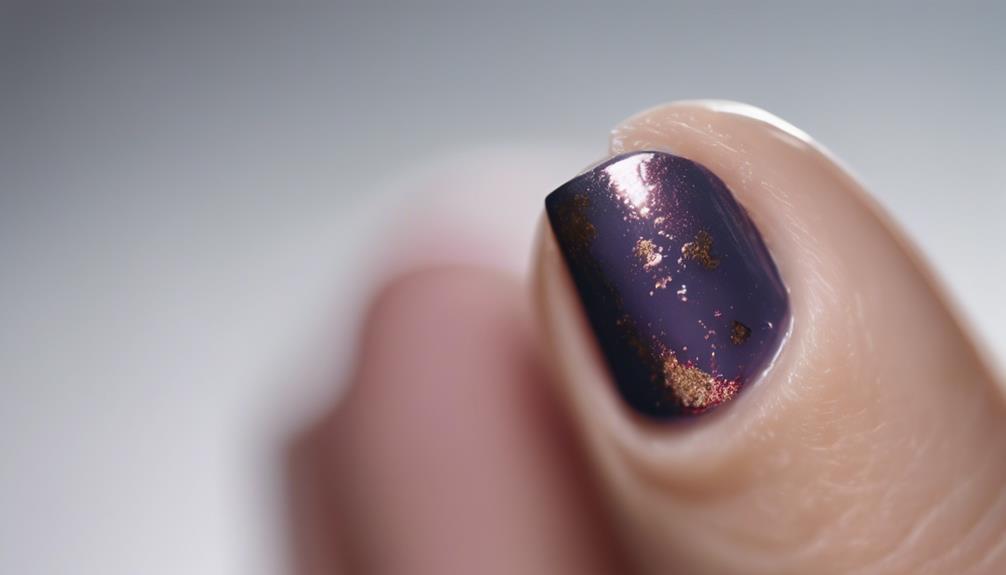
Prolonged use of nail polish may have a significant impact on the overall health and condition of the nail bed. The chemicals in nail polish, along with the frequent application and removal processes, can lead to various issues such as dryness, discoloration, brittleness, and weakening of the nails. Here is a table summarizing the potential effects on nail bed health:
| Potential Effects | Description |
|---|---|
| Dryness | Chemicals in nail polish can dehydrate the nail bed, leading to dry and brittle nails. |
| Discoloration | Prolonged use may cause nails to turn yellow or develop white spots. |
| Brittleness | Nail polish can make nails fragile and prone to breakage. |
| Weakness | Continuous use weakens the nails, making them more susceptible to damage. |
| Infection Risk | Closed environment under nail polish increases the risk of fungal or bacterial infections. |
It is essential to allow your nails some polish-free time to recover and maintain their natural health and strength.
Frequently Asked Questions
Can Wearing Nail Polish All the Time Lead to Nail Fungus?
Consistent nail polish wear can create a warm, moist environment ideal for fungus growth. Lack of nail "breathing" may lead to nail fungus. Adequate breaks, proper nail care, and using quality products can mitigate risks.
Is There a Correlation Between Wearing Nail Polish Constantly and Developing Allergies to Certain Nail Polish Ingredients?
Continuous use of nail polish may increase the risk of developing allergies to certain ingredients. Regular exposure to chemicals like formaldehyde, toluene, and dibutyl phthalate can sensitize the skin, leading to adverse reactions in susceptible individuals.
How Does Wearing Nail Polish Regularly Affect the Natural Moisture Levels of the Nails?
Regular nail polish wear can impact natural nail moisture levels by creating a barrier that may inhibit proper hydration. Over time, this can lead to dry, brittle nails. Maintaining a balance through hydrating treatments is essential for healthy nails.
Can Wearing Nail Polish for Extended Periods of Time Cause the Nails to Become Thinner or More Prone to Breaking?
Extended use of nail polish can lead to nail thinning and increased susceptibility to breakage. This occurs due to the constant exposure to harsh chemicals present in polishes. Proper nail care, including breaks from polish, can help maintain nail health.
Are There Any Long-Term Effects on Nail Growth Patterns From Constantly Wearing Nail Polish?
Exploring the influence of perpetual nail polish usage on long-term nail growth patterns is essential. Consistent application might potentially alter the natural growth trajectory, warranting further research to comprehend its effects thoroughly and offer informed guidance.

